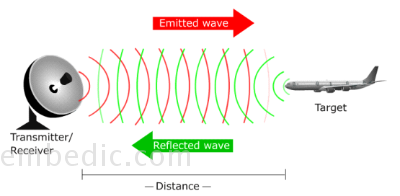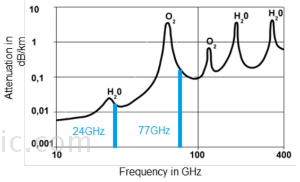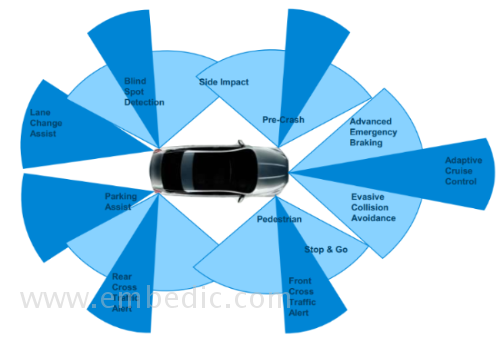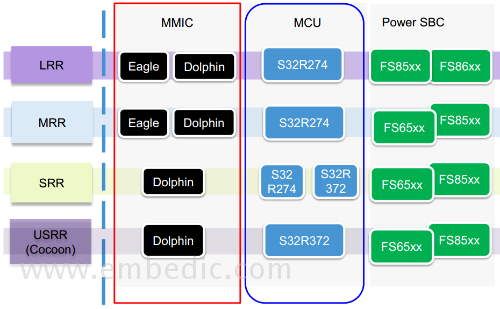In recent years, with the development and popularization of radar technology, radar has appeared in various fields, such as passenger cars, commercial vehicles, aftermarket and industrial fields. In this regard, NXP also introduced corresponding radar solutions.
Radar (RADAR): Radio Detection And Ranging (Radio Detection And Ranging)
Radar uses millimeter waves to detect the distance, speed, and angle of objects. A radar system consists of three parts: the transmitter emits radio waves; the receiver receives the reflected waves of the object; the processor processes the signal to obtain the information of the object.

Radar (RADAR): Radio Detection And Ranging (Radio Detection And Ranging)
Radar uses millimeter waves to detect the distance, speed, and angle of objects. A radar system consists of three parts: the transmitter emits radio waves; the receiver receives the reflected waves of the object; the processor processes the signal to obtain the information of the object.

It can be seen that the attenuation of 77GHz is greater than the attenuation of 24GHz. Although high attenuation may be a disadvantage of many applications, it allows the frequency to be reused within a very short distance. In fact, attenuation limits the range of millimeter-wave radars, which is a good thing when there are thousands of cars on the road using radar at the same time.
Now 77GHz/79GHz is a dedicated frequency band for automotive radars. This frequency band has high detection rate and high resolution for detecting small objects, and the corresponding antenna size is also small, which has a significant effect on the miniaturization of devices.
Millimeter-wave radar is divided into long-range radar (LRR) and short- and medium-range radar (MRR/SRR) according to distance. Long-range radar is often used for adaptive cruise, emergency braking, and forward collision warning. Short- and medium-range radars are mainly used for blind spot detection, lane change assistance, parking assistance, and cross traffic alarms.

At present, there are many technologies for detecting targets in addition to radar, but also ultrasonic technology, vision technology, and laser technology. Different technologies have their own strengths and limitations.
Radar technology is more suitable for applications in cars. In fact, cars usually use a variety of technologies, such as radar-based and visual-assisted matching methods.
NXP has launched a series of products for millimeter wave radars, which basically cover the various components of the radar system. NXP's millimeter wave system framework is as follows:

Among them, the transceiver part of the radar adopts MMIC technology. The mainstream product of the current transceiver chip is the Dolphin series, and the mainstream product of the MCU is the S32R274 series.
In addition, NXP has also launched a dedicated FS85 series for the power supply of automotive radars. Transceiver, together with PCU and Power, provides developers with a complete set of options, which can be developed on one platform, which can significantly save developers' energy and time.

IC MCU 8BIT 768B OTP 28SOIC
IC MCU 16BIT 88KB FLASH 28SSOP
IC MCU 16BIT 32KB FLASH 44TQFP
IC MCU 8BIT 80KB FLASH 80LQFP
1
2
3
4
5
6